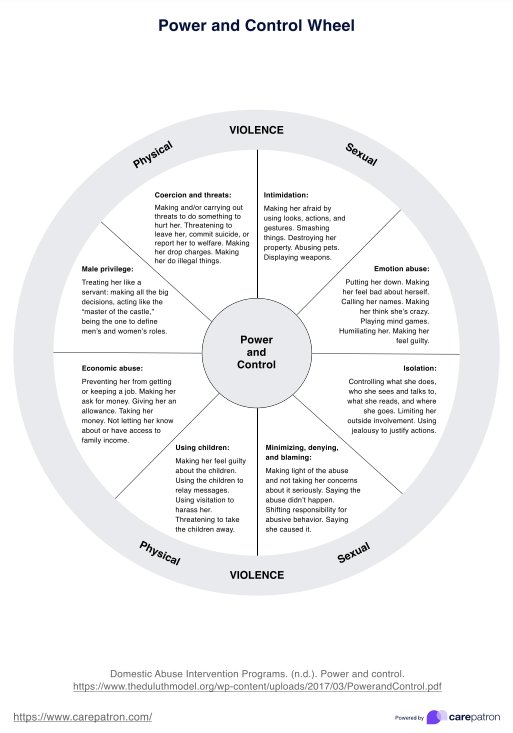The Power and Control Wheel is a framework developed by the Domestic Abuse Intervention Project in Duluth, Minnesota to illustrate the tactics an abusive partner uses to maintain power and control in a relationship. The model posits that the goal of these tactics is to exert control over the victim, reflecting the abuser's belief that they are entitled to dominate their intimate partner.

Power And Control Wheel
Check if your patient is going through domestic abuse by helping them identify abusive behaviors with the Power and Control Wheel.
Power And Control Wheel Template
Commonly asked questions
Emotional abuse often involves a pattern of behaviors aimed at undermining the victim's self-worth and sense of reality over time. Common cycles can include gaslighting, intermittent reinforcement, and the use of shame, humiliation, and criticism to maintain control.
The opposite of the Power and Control Wheel is the Equality Wheel, also created by the Domestic Abuse Intervention Project. The Equality Wheel depicts behaviors that promote equality, mutual respect, trust, honesty, shared responsibility, and non-violence in a healthy relationship.
EHR and practice management software
Get started for free
*No credit card required
Free
$0/usd
Unlimited clients
Telehealth
1GB of storage
Client portal text
Automated billing and online payments











